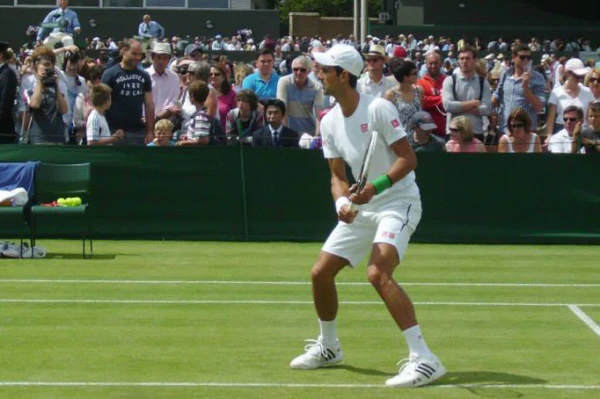CNA Staff, Aug 6, 2024 / 14:15 pm
Novak Djokovic on Sunday became the first tennis player in a dozen years, male or female, to complete a tennis “Golden Slam,” winning all four major annual tournaments and an Olympic gold medal.
The 37-year-old Serb, considered by many the greatest male tennis player in history, defeated the young Spanish superstar Carlos Alcaraz to win the gold at the Paris Olympics.
Many Catholics took note of the fact that an elated Djokovic made the sign of the cross several times after winning the match — but you may also have noticed that he did the sign of the cross from right to left, rather than the typical Catholic left to right.
Novak Djokovic, a devout Orthodox Christian, gets down on his hands and knees to thank God after his victory at the Paris Olympics. ✝️🥇
— Oli London (@OliLondonTV) August 4, 2024
The Serbian tennis champion, has won his first Olympic gold medal, after competing in 5 separate Olympic Games. pic.twitter.com/shsTXXu3MK
Djokovic is a Serbian Orthodox Christian. The sign of the cross is rich with meaning for all Christians, including Catholics, but the Orthodox practice, which is arguably more ancient, adds additional levels of meaning.
According to the Catholic Encyclopedia, the very earliest Christian practice appears to be the tracing of the sign of the cross of one’s forehead, which later evolved into the practice of making a sign of the cross across a larger portion of the body. St. Basil (329–379) wrote that the apostles “taught us to mark with the sign of the cross those who put their hope in the Lord.”
When Catholics do the sign of the cross today, they cross themselves with their hand starting at the top, going down, and then from left to right. When Orthodox Christians do the sign of the cross, they start at the top, go down, and then from right to left.
Many Orthodox sources say part of the reason that the sign of the cross is done in this direction is because during the Orthodox Divine Liturgy — the equivalent of the Mass — the Orthodox priest does the sign of the cross from left to right, facing the people, who copy his movements in mirror image. That said, the exact reasons for the differences are ancient and not entirely clear even to the Orthodox themselves.
There’s another level of meaning in the Orthodox sign of the cross, though, that is more readily documented. The Orthodox hold their hand with the index and middle fingers and thumb together, a symbol of the three persons of the Holy Trinity — the Father, the Son, and the Holy Spirit — together as one God. The two fingers, ring and pinky, that remain down symbolize the two natures of Jesus: fully human and fully divine.

Djokovic’s Christian history
Djokovic was brought up in the Serbian Orthodox Church, which claims the majority of the country’s citizens and several million members worldwide. He grew up during a tumultuous time in the region and survived the wars between the Yugoslavian states.
In 2011, Djokovic was awarded the Serbian Orthodox Church’s highest honor “for his active love toward Mother Church, particularly fervent and persistent helping [of] the Serbian people and the sanctuaries of our Holy Church.”
He has donated several million dollars to the Serbian public health system and to charities run by the Serbian Orthodox Church.
“This is the most important title of my life, because before being an athlete, I am an Orthodox Christian,” he said upon receiving the award.
Despite Djokovic’s frequent displays of a cross necklace, performance of the sign of the cross, and talk of God, a 2015 biography of Djokovic opined that “[i]t would wrong to suggest that he is devoutly religious, but the ritualistic role the church plays in the life of Serbia is sufficiently strong that it is very much a part of his life.”
(Story continues below)
Still, the tennis champ has shown himself to be a person animated by love of neighbor. He runs the Novak Djokovic Foundation, which primarily focuses on rebuilding preschools and supporting teachers and parents of young schoolchildren. And in 2017, he opened a restaurant in Serbia that provides free food to the homeless.






